Grassroots Party
The Grassroots Party was a political third party in the United States established in 1986 to oppose drug prohibition. The party shared many of the progressive values of the Farmer-Labor Party but with an emphasis on cannabis/hemp legalization issues, and the organization traced their roots to the Youth International Party of the 1960s.[1][2][3]
Grassroots Party | |
|---|---|
 | |
| Abbreviation | GRP |
| Founded | 1986 |
| Dissolved | 2012 |
| Preceded by | Youth International Party |
| Succeeded by | Legal Marijuana Now Party |
| Newspaper | The Canvas |
| Ideology | Marijuana legalization |
| Colors | Green |
The Grassroots Party was active in the U.S. states of Iowa, Minnesota, and Vermont. The party was most successful in Vermont, where they achieved major party qualification in 1996,[4] a status which they retained for six years, until 2002.
Platform
United States Bill of Rights
The permanent platform of the Grassroots Party was the Bill of Rights. Individual candidates' positions on issues varied from Libertarian to Green. All Grassroots candidates would end marijuana/hemp prohibition, thus re-legalizing cannabis for all its uses.
U.S. presidential candidates
Jack Herer (1939-2010), author of The Emperor Wears No Clothes: Hemp & The Marijuana Conspiracy, was the Grassroots presidential candidate in 1988[5] and 1992.[6]
Grassroots Party ran candidates in every presidential election from 1988 to 2000.[5][6][7][8]
In 1996 the Grassroots Party of Minnesota nominated Dennis Peron in the presidential election. In 2000, the Grassroots Party of Vermont nominated Denny Lane as their presidential candidate.
In 2012, the Grassroots Party nominated Minnesota businessman Jim Carlson as their presidential candidate.[9][10]
Results in presidential elections
| Year | Candidate | VP candidate | Ballot access | Popular votes | Percentage |
|---|---|---|---|---|---|
| 1988 |  Jack Herer | 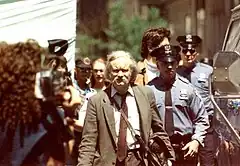 Dana Beal | MN | 1,949[5] | 0.00% |
| 1992 |  Jack Herer | Derrick Grimmer | MN, IA | 3,875[6] | 0.00% |
| 1996 | 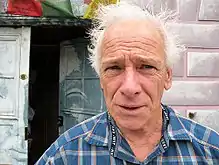 Dennis Peron | 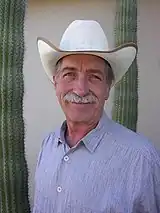 Arlin Troutt | MN, VT[7] | 5,378[7] | 0.01% |
| 2000 | _self-portrait%252C_2010.jpg.webp) Denny Lane | 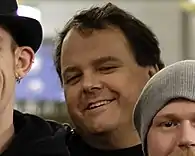 Dale Wilkinson | VT | 1,044[11] | 0.00% |
| 2012 | Jim Carlson | _in_2008.jpg.webp) George McMahon | MN | 3,149 | 0.00% |
History
Early history
The Grassroots Party was established in Minnesota in 1986, by Tim Davis, Derrick Grimmer, Oliver Steinberg, and Chris Wright, as an independent political party that focused on marijuana legalization. Derrick Grimmer, Ph.D., ran for Minnesota Attorney General in 1986. Grimmer received 16,394 votes.[12]
Founding member Oliver Steinberg, who was a Republican candidate for US Congress in 1984,[13] had a background of violence discrediting the peace movement in the 1970s.[14] Steinberg was the Grassroots candidate for Lieutenant Governor in 1990.[15]
The Grassroots Party of Minnesota (GRP) ran a full slate of statewide candidates in 1994 and won more votes than all other third parties in Minnesota combined.[16][17] The Vermont Grassroots Party was formed in 1994.
Russell Bentley, a party candidate for US Senate in 1990 and US Congress in 1992 and GRP board member, was arrested on marijuana smuggling charges in 1996. Bentley was sentenced to five years in federal prison.[18]
The Independent Grassroots Party
In Minnesota in 1996 the Grassroots Party split, forming the Independent Grassroots Party for one election cycle. John Birrenbach was the Independent Grassroots Presidential candidate and George McMahon was the Vice-presidential candidate.[7] Dan Vacek was the Independent Grassroots candidate for US Representative (MN District 4).[19][20] In 1998, members of the Independent Grassroots Party established the Legal Marijuana Now political party.[3][21]
Minnesota
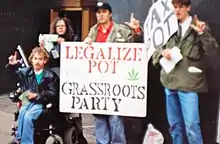
Gubernatorial candidates
In 1990, Ross Culverhouse, a computer programmer and Vietnam veteran was the Grassroots gubernatorial candidate. Oliver Steinberg was the party's candidate for Lieutenant Governor. Culverhouse received 17,176 votes.
Will Shetterly, a science-fiction writer and actor, ran for governor of Minnesota in 1994. He placed third out of six candidates.[22]
Results in Minnesota gubernatorial elections
| Year | Office | Candidate | Lieutenant Governor candidate | Popular votes | Percentage |
|---|---|---|---|---|---|
| 1990 | MN Governor | Ross Culverhouse | Oliver Steinberg | 17,176[15] | 0.96% |
| 1994 | MN Governor | Will Shetterly | Tim Davis | 20,785[16] | 1.20% |
| 1998 | MN Governor | Chris Wright | Darrell Paulsen | 1,727[23] | 0.10% |
| 2010 | MN Governor | Chris Wright | Edwin H. Engelmann | 7,516 | 0.36%[24] |
Minnesota elections
In 2000, the party nominated David Daniels, an African American playwright/performance artist from Minneapolis, as candidate for the United States Senate. Daniels had a very small campaign budget and was only invited to speak at some events broadcast on Minnesota Public Radio and Twin Cities Public Television. On election day, Daniels received 21,447 votes.[25][26][27]
In 2002, Grassroots Party co-founder and candidate, Tim Davis, joined the Green Party. Davis returned to the Grassroots Party and ran for United States Senator in 2012. Davis, in 2020, became chairperson of the Legal Marijuana Now Party Minnesota chapter.
2010–2014
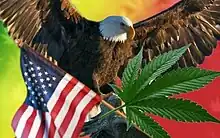
In 2010, Grassroots candidate Chris Wright was on the ballot in the governor's election.
The last Grassroots Party candidates ran in Minnesota, in 2012.
Steinberg and Wright, in 2014, formed the Minnesota Grassroots—Legalize Cannabis Party. Davis and the rest of the Grassroots Party, from 2014 to 2016, merged into the Minnesota Legal Marijuana Now Party.[28]
After 2014
In 2023, Grassroots Party founder Oliver Steinberg testified before the Minnesota Senate Public Safety Committee, in favor of Senate File 73 to create a regulated commercial cannabis market in the state.[29] Some scholars have credited Minnesota's marijuana political parties, including GRP, for the state Democratic Party championing cannabis legalization after 2016.[30]
Results in Minnesota state elections
| Year | Office | Candidate | Popular votes | Percentage |
|---|---|---|---|---|
| 1986 | MN Attorney General | Derrick Grimmer | 16,394[12] | 1.17% |
| 1990 | MN Secretary of State | Candice Sjostrom | 43,812[15] | 2.48% |
| 1990 | MN Treasurer | Colleen Bonniwell | 84,919[15] | 4.94% |
| 1990 | MN Senator 58 | Eric Anderson | 1,797[15] | 7.88% |
| 1990 | MN Representative 59B | Tim Davis | 755[15] | 5.56% |
| 1990 | MN Representative 60A | Spencer Orman | 477[15] | 7.29% |
| 1992 | MN Senator 59 | Dale Wilkinson | 2,179[31] | 7.05% |
| 1994 | MN Secretary of State | Dale Wilkinson | 54,009[16] | 3.12% |
| 1994 | MN Attorney General | Dean Amundson | 69,776[16] | 4.17% |
| 1994 | MN Auditor | Steven Anderson | 80,811[16] | 4.79% |
| 1994 | MN Treasurer | Colleen Bonniwell | 84,486[16] | 5.20% |
| 1998 | MN Representative 59A | Dale Wilkinson | 1,270[23] | 9.66% |
Results in federal elections
| Year | Office | Candidate | Popular votes | Percentage |
|---|---|---|---|---|
| 1988 | US Senator | Derrick Grimmer | 9,016[5] | 0.43% |
| 1988 | US Representative 5 | Chris Wright | 268[5] | 0.11% |
| 1990 | US Senator | Russell Bentley | 29,820[15] | 1.65% |
| 1992 | US Representative 3 | Dwight Fellman | 9,164[31] | 2.91% |
| 1992 | US Representative 4 | Dan Vacek | 4,418[31] | 1.59% |
| 1992 | US Representative 5 | Russell Bentley | 6,786[31] | 2.24% |
| 1994 | US Senator | Candice Sjostrom | 15,920[16] | 0.90% |
| 1994 | US Representative 4 | Dan Vacek | 6,211[16] | 2.94% |
| 1996 | US Senator | Tim Davis | 14,139[20] | 6.48% |
| 1996 | US Representative 4 | Phil Willkie | 3,615[20] | 1.41% |
| 1996 | US Representative 5 | Erika Anderson | 13,102[20] | 5.33% |
| 2000 | US Senator | David Daniels | 21,447[27] | 0.89%[27] |
| 2012 | US Senator | Tim Davis | 30,532 | 1.07% |
Iowa
Derrick Grimmer, Ph.D., a founding member of the Grassroots Party, moved from Minnesota to Iowa in 1988 and formed the Grassroots Party of Iowa. Grimmer ran for Iowa State Treasurer in 1990 and received 15,745 votes and he ran for U.S. House of Representatives (IA District 3) in 1994 and received 2,282 votes.[32][33]
Vermont
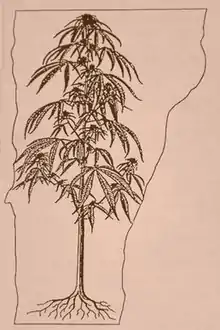
Gubernatorial candidates
The Vermont Grassroots Party formed in 1994. Dennis Lane was their candidate for Governor of Vermont in 1994, and 1996. Bill Coleman ran for Lieutenant Governor in 1996, and again in 1998.
Joel Williams was the Vermont Grassroots nominee for Governor in 1998, and 2000.
Results in Vermont gubernatorial elections
| Year | Office | Candidate | Popular votes | Percentage |
|---|---|---|---|---|
| 1994 | Vermont Governor | Dennis Lane | 2,118 | 1.0%[34] |
| 1996 | Vermont Governor | Dennis Lane | 3,667 | 1.4%[35] |
| 1996 | Lieutenant Governor | Bill Coleman | 5,296 | 2.1%[35] |
| 1998 | Vermont Governor | Joel Williams | 3,305 | 1.5%[36] |
| 1998 | Lieutenant Governor | Bill Coleman | 3,913 | 1.8%[36] |
| 2000 | Vermont Governor | Joel Williams | 1,359 | 0.5%[11] |
| 2000 | Lieutenant Governor | Tom Beer | 8,776 | 3.1%[11] |
| 2002 | Vermont Governor | Patricia Hejny | 771 | 0.4%[37] |
| 2002 | Lieutenant Governor | Sally Ann Jones | 4,310 | 1.9%[37] |
Vermont elections
In 1994, in addition to Governor, Vermont Grassroots ran candidates for U.S. Senator, U.S. Representative, Auditor of Accounts, and Attorney General.[34]
In 1996 Vermont Grassroots ran another slate of candidates including Governor, Lieutenant Governor, U.S. Representative, Attorney General, Auditor of Accounts, State Treasurer, and Secretary of State.
Three Vermont Grassroots candidates won five percent or more of the popular vote in the 1996 election, qualifying the Grassroots Party for recognized major party status in Vermont.[35][4]
In 1998 Vermont Grassroots ran a slate of candidates including gubernatorial candidate Joel Williams who received 3,305 votes (1.5%) and U.S. Senate candidate Bob Melamede who received 2,459 votes (1.1%). Matthew Mulligan received 3,464 votes (1.6%) for U.S. Representative; Randy Bushey got 12,312 votes (6%) for State Treasurer; Steven Saetta got 6,345 votes (3%) for Auditor of Accounts; Dennis "Denny" Lane received 8,347 votes (3.9%) for Secretary of State and Sandy "Wells" Ward got 17,954 votes (8.8%) for Attorney General.[36]
In 2000 the Vermont Grassroots Party ran a slate of candidates with Ward leading the ticket as candidate for Attorney General, receiving 38,713 votes, or 14.7% of the popular vote.[11]
The Grassroots Party of Vermont fielded candidates representing a mixture of liberal and libertarian views for over a decade. The Vermont Grassroots Party dissolved after 2002.
In 2002 one of the Vermont Grassroots state leaders, Joel Williams, became a member of the Libertarian Party of Vermont. The Vermont Marijuana Party was formed in 2002 by Loretta Nall and Cris Ericson.
Vermont Grassroots Party ran a full slate, including gubernatorial candidates, in 2002. Teresa Bouchard led the way as candidate for State Treasurer with 10,757 votes (4.8%).[37]
Results in Vermont state elections
| Year | Office | Candidate | Popular votes | Percentage |
|---|---|---|---|---|
| 1994 | VT Auditor | Pamela Zarra Redden | 7,239 | 3.7%[34] |
| 1994 | VT Attorney General | Ted Talcott | 7,062 | 3.5%[34] |
| 1996 | VT Treasurer | Randy Bushey | 16,671 | 7.0%[35] |
| 1996 | VT Secretary of State | Jimmy De Pierro | 17,283 | 7.4%[35] |
| 1996 | VT Auditor | James Sweet | 11,134 | 4.7%[35] |
| 1996 | VT Attorney General | Tom Kingston | 14,443 | 6.1%[35] |
| 1998 | VT Treasurer | Randy Bushey | 12,312 | 6.2%[36] |
| 1998 | VT Secretary of State | Dennis Lane | 8,347 | 4.0%[36] |
| 1998 | VT Auditor | Steven Saetta | 6,345 | 3.1%[36] |
| 1998 | VT Attorney General | Sandy Ward | 17,954 | 8.9%[36] |
| 2000 | VT Attorney General | Sandy Ward | 39,713 | 14.7%[11] |
| 2002 | VT Treasurer | Claude Bouchard | 10,757 | 4.8%[37] |
| 2002 | VT Secretary of State | Tina Thompson | 7,166 | 3.2%[37] |
| 2002 | VT Auditor | Lynn Appleby | 8,172 | 3.7%[37] |
| 2002 | VT Attorney General | Mann Ward | 6,307 | 2.8%[37] |
Results in federal elections
| Year | Office | Candidate | Popular votes | Percentage |
|---|---|---|---|---|
| 1994 | US Senator | Bob Melamede | 1,416 | 0.7%[34] |
| 1994 | US Representative | Jack Rogers | 2,664 | 1.3%[34] |
| 1996 | US Representative | Robert Melamede | 1,350 | 0.5%[35] |
| 1998 | US Senator | Bob Melamede | 2,459 | 1.1%[36] |
| 1998 | US Representative | Matthew Mulligan | 3,464 | 1.6%[36] |
| 2000 | US Senator | Billy Greer | 4,889 | 1.7%[11] |
| 2000 | US Representative | Jack Rogers | 4,799 | 1.7%[11] |
| 2002 | US Representative | Fawn Skinner | 2,344 | 1.0%[37] |
California
In 2016, musician and martial artist Marvin Sotelo ran for U.S. House of Representatives in California's 40th congressional district as a Grassroots Party candidate. In California the top two vote-getters in the primary advance to the general election. Sotelo did not make it onto the ballot.[38]
Publications
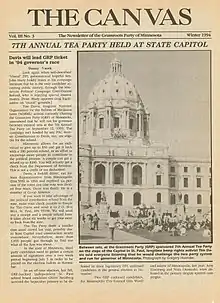
The Canvas
The Canvas, the newsletter of the Grassroots Party of Minnesota, was published quarterly from 1991 until 1996. It reached a circulation of 5,000 printed copies.
The name of The Canvas was inspired by Webster's Dictionary definition of the word, which literally means "hempen."
From 1991–1994, The Canvas newsletter was designed and edited by Dan Vacek. During 1992, The Canvas was co-edited by Roger Gibian. In 1994–1995, Will Shetterly edited and produced The Canvas for several issues.[2] In 1996, an issue of the newsletter was edited by Steven Anderson, and the last issue, published for the 1996 elections, was edited by Tim Davis.
References
- Kahn, Aron (October 1987). "Marijuana backers keep issue burning / Controversy still alive". Star Tribune.
"When we're handing out leaflets, some people will mutter, 'Get a job,' like we're subclass citizens," Grimmer said. "They typecast us. They judge people by the coloration of their thoughts." Grimmer, who holds a doctorate in physics, has a job, thank you. He is a research scientist at 3M. "The reason why we are in our present mess with respect to drug prohibition is that people do not analyze the situation rationally," said Grimmer, who ran for Minnesota attorney general last year under the aegis of the Grass Roots Party.
- Gilyard, Burl (July 5, 1995). "Doobie Brothers: Grassroots Party members grapple with their budding political clout". Twin Cities Reader.
- Harvieux, Vincent (May 3, 2018). "Joint Ops: Why Minnesota has two pro-marijuana parties". Perfect Duluth Day.
- Tuman, Joseph S. (2008). "The Players in the Process". Political Communication in American Campaigns, p. 19. SAGE Publishing. ISBN 978-1-412-90945-7.
- Minnesota Secretary of State (November 1988). "Minnesota Election Results 1988, p. 18" (PDF). Minnesota Legislative Reference Library.
- Klein, Patricia A. (June 1993). "Federal Elections 92: Election Results for the U.S. President, the U.S. Senate and the U.S. House of Representatives, p. 9" (PDF). Federal Election Commission.
- Bickford, Bob (October 7, 1998). "1996 Presidential Election Results by State". Ballot Access News.
- "2000 Official Presidential General Election Results". Federal Election Commission. December 2001.
- KBJR-TV (June 29, 2012) "Duluth Head Shop Owner Continues Presidential Bid", MSNBC. Retrieved July 9, 2012.
- "Grassroots Party Nominates a Presidential Ticket", Ballot Access News. July 7, 2012. Retrieved July 9, 2012.
- Secretary of State of Vermont (2000). "Election Results Archive: 2000 General Election". Vermont Elections Database.
- Minnesota Secretary of State (November 1986). "Minnesota Election Results 1986, p. 27" (PDF). Minnesota Legislative Reference Library.
- Minnesota Secretary of State (September 1984). "Minnesota Election Results 1984, p. 4" (PDF). Minnesota Legislative Reference Library.
- Darn, John (May 12, 1972). "Violent Actions Reported Rising: Frustration Also Mounts as Students Clash with Police". The New York Times.
The shooting in Madison occurred about 2:30 A.M., the police said, after hours of street fighting, when three policemen followed a car containing three students suspected of having planted Molotov cocktails near an insurance building. As the patrol car followed the car to the driveway of an apartment building at Dayton and Bedford Streets, eight shots were fired from the building, the police said. One policeman was wounded in the wrist, and the other two—including John Halford, who was hospitalized—were wounded in the shoulder. The police returned the fire and flushed five men out of the building with tear gas. A 22‐caliber and a .25‐caliber pistol were found. The man charged with three counts of attempted murder was identified as Oliver W. Steinberg, former undergraduate. The three occupants of the car were charged with conspiracy to commit arson. Bail for Mr. Steinberg was set at $55,000, and for the other three at $10,000. All are Madison residents.
- Minnesota Secretary of State (November 1990). "Minnesota Election Results 1990, pp. 28-50" (PDF). Minnesota Legislative Reference Library.
- Minnesota Secretary of State (November 1994). "Minnesota Election Results 1994, pp. 27-36" (PDF). Minnesota Legislative Reference Library.
- Brauer, David (November 26, 1994). "In Minnesota, Joint Return Takes On A New Meaning". The Washington Post.
- King, Karisa (August 10, 1996). "Accused drug dealer sentenced to five years in prison". The Brownsville Herald.
- Shaffer, David (July 22, 1996). "On political fringe, with public funds: Grassroots Party stands on prostitution, adult-child sex push some members away". St. Paul Pioneer Press.
Has the Grassroots Party retreated further to the political fringe just as Minnesota taxpayers are beginning to subsidize it? At least some party activists think so, including party co-founder Oliver Steinberg, who recently was expelled in an ideological clash. ... "They say politics makes strange bedfellows," said Steinberg, who founded the party with two other pro-marijuana activists in 1986. "But I don't think the people who vote for the Grassroots Party or give their money to support it want to mix the politics of prostitution and pederasty."
- Minnesota Secretary of State (November 1996). "Minnesota Election Results 1996, pp. 34-40" (PDF). Minnesota Legislative Reference Library.
- Brash, Jim (April 20, 2016). "Q & A with the Legal Marijuana Now Party of Minnesota". The North Star. Archived from the original on May 10, 2017.
- Shetterly, Will (2008-08-08). "Will Shetterly: Biography". Archived from the original on 2012-05-27. Retrieved 2021-05-02.
- Minnesota Secretary of State (November 1998). "Minnesota Election Results 1998, pp. 30-172" (PDF). Minnesota Legislative Reference Library.
- "2010 MN Governor Election Results". Minnesota Secretary of State. November 2, 2010.
- "Hopefuls from small parties advocate big ideas". Star Tribune. Associated Press. October 17, 2000.
The third-party candidates running for the U.S. Senate may suffer from low visibility and virtually nonexistent campaign budgets, but a debate among those candidates Monday night showed they are not lacking in big and bold ideas. Their proposals ranged from ending the war on drugs to remaking society into one that is controlled by workers and farmers. The 30-minute debate, sponsored by the Minnesota Citizens' Forum and broadcast on Twin Cities Public Television.
- "Bold ideas advanced by minor parties". Star Tribune. Associated Press. October 22, 2000.
Playwright and performance artist David Daniels wonders why two of his productions were shut down because of marijuana smoking in the audience.
- "Minnesota Secretary of State, 2000 US Senate Election Results". 2000-11-07. Archived from the original on 2012-11-10.
- "Preaching Parking and Profiting: Life Just Outside the Minnesota State Fair". City Pages. August 31, 2017.
We used to be called the Grassroots Party, now we're the Legal Marijuana Now Party
- Croman, John (January 26, 2023). "Minnesota Senate panel takes in marijuana bill: The Senate's Public Safety Committee heard testimony on recreational pot legislation for the first time". KARE-TV.
- Labovitch, William (November 27, 2022). "How Minnesota got to marijuana legalization politically". Star Tribune.
- Minnesota Secretary of State (November 1992). "Minnesota Election Results 1992, pp. 37-51" (PDF). Minnesota Legislative Reference Library.
- Iowa Secretary of State (November 1990). "1990 General Election: Official Canvass Summary" (PDF). Iowa Election Results Archive.
- Iowa Secretary of State (November 1994). "1994 General Election: Official Canvass Summary, p. 4" (PDF). Iowa Election Results Archive.
- Secretary of State of Vermont (1994). "Election Results Archive: 1994 General Election". Vermont Elections Database.
- Secretary of State of Vermont (1996). "Election Results Archive: 1996 General Election". Vermont Elections Database.
- Secretary of State of Vermont (1998). "Election Results Archive: 1998 General Election". Vermont Elections Database.
- Secretary of State of Vermont (2002). "Election Results Archive: 2002 General Election". Vermont Elections Database.
- Toole, Edwardo (September 14, 2015). "Satanist Runs For Congress". CNN. Archived from the original on October 7, 2017. Retrieved May 2, 2021.
.svg.png.webp)